Last week, we joined one of our school groups on a geography and geology trip to Iceland. Here, we share our itinerary, excursions, and what we learnt – to offer a deeper insight into our school trips to Iceland.
Arrival
Starting off with a lunchtime flight from London Gatwick, we arrived into Reykjavík within just two and a half hours. As the clocks in the UK had recently turned back to Greenwich Mean Time for the winter, there was no time difference to get accustomed to – so a nice and easy arrival straight off the mark!
As we arrived into Iceland’s main international airport in Keflavík, we admired the modern Nordic design of the long concourse, which served as a taster of things to come. Our group had chosen a hotel in the small geothermal town of Hveragerði, which translates to ‘hot springs’; the students were thrilled to try the outside heated swimming pools and hot tubs in chilly November.
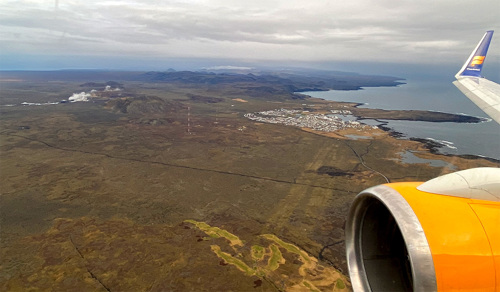
The Itinerary
Our school group’s itinerary was tailored to GCSE and A level students studying geography and geology. One of our in-resort guides accompanied the group throughout their trip, providing extensive geographic and cultural commentary about Iceland as we travelled through the landscapes.
Day 1 Arrival in Iceland
Visit the Perlan Museum
Day 2 Reykjavík tour: Visit to the Whales of Iceland exhibition
Day 3 Glacier hike
Lava Centre visit
Lava tunnel
Day 4 Golden Circle tour, with Fontana visit
Pizza night out
Day 5 Departure to the UK
Excursions
Perlan
Featuring everything you can expect on a school trip to Iceland, a visit to Perlan is an excellent introduction to the country. Housing an ice cave, planetarium, Northern Lights experience, ice cream shop (Icelanders love their ice cream!) and interactive exhibits, Perlan offers several displays that will further students’ understandings of the force of volcanoes and Iceland's geological history.

Reykjavík
The world’s northernmost capital, Reykjavík may be compact, but it’s bursting with creativity and culture. Towering above the city is Hallgrimskirkja, the largest church in Iceland which draws visitors through the vibrant and colourful streets to the top of Skólavörðuhæð hill. With its small, quirky houses and open spaces, the cityscape is the perfect combination of colourful, modern, antiquated and charming.
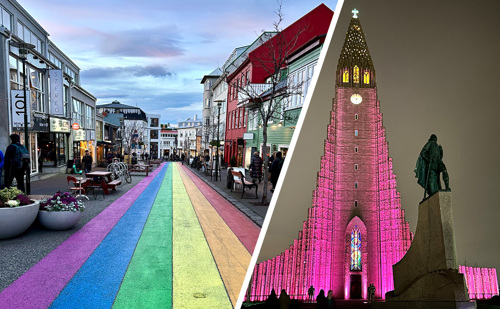
Whales of Iceland Exhibition
The largest whale museum in Europe, Reykjavik’s Whales of Iceland features 23 life-sized models of whale species that have been seen in Icelandic waters. There’s also an award-winning documentary about the effects of noise pollution on whales and marine life, which will leave students with a new perspective and appreciation for these majestic marine creatures.
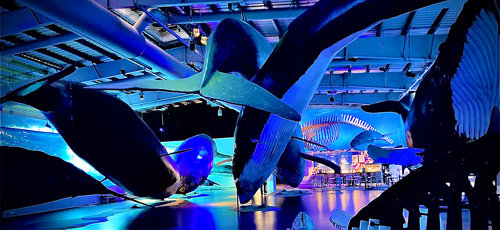
Glacier Hike
A trip highlight! Once we were equipped with our helmet, harness, and crampons, we ventured up the glacier at Sólheimajökull. Split into small groups, the guides safely led us up an ice trail of hidden crevasses, ice caves and slippery surfaces onto the glistening glacier. A great educational experience for students which offers a visual reminder of how quickly these icy wonders are retreating.
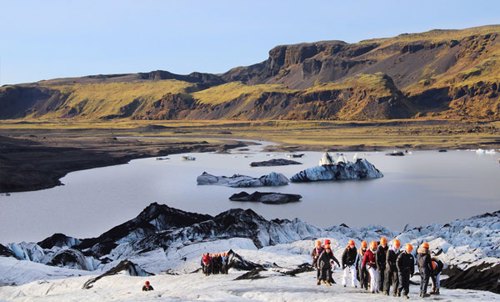
Lava Centre
Located on the route between Reykjavik and Sólheimajökull, the Lava Centre is an interactive, high-tech educational exhibition and documentary showing the causes and effects of volcanic activity and earthquakes, and the creation of Iceland over millions of years.

Lava Tunnels
A magical experience not to be missed, walking through a lava tunnel in Raufarhólshellir offers a wealth of learning opportunities for geography and geology students. During our trip, our guide was not only informative but really funny, which contributed to the experience! The group thoroughly enjoyed the stories and the experience when the lights went out (all part of the tour).
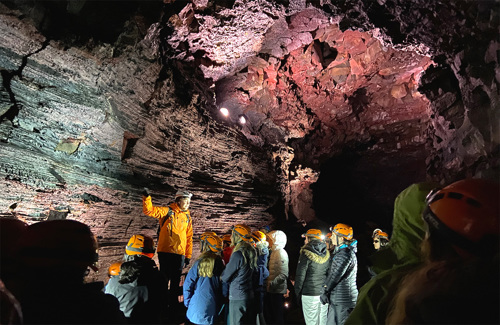
Golden Circle
Most of our school groups visiting Iceland choose to experience the Golden Circle – a popular tour of the country’s natural attractions that loops over 300km of southeast Iceland. The first stop is the Kerið crater, a 3,000-year-old crater with vivid red slopes and dramatic colour. Second, students can experience one of the most beautiful and powerful waterfalls in Iceland: the Gullfoss waterfall.
At Strokkur, Iceland’s most visited active geyser, groups wander through a valley of hot springs, mud pits and a distinctive sulphur smell, to the incredible boiling water column, which erupts every 4-10 minutes and can reach up to 40 metres.
Finally, there’s Thingvellir National Park, an impressive landscape that was home to the Icelandic Parliament (Althing) for nearly 800 years. Located in a rift valley between the North American and Eurasian tectonic plates, the park is full of dramatic cliffs, deep gorges, and flowing rivers.
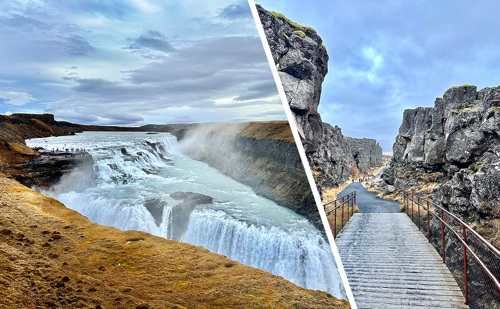
Laugarvatn Fontana
As our group departed on our Golden Circle tour from Hveragerði (rather than Reykjavik), we had some additional time to enjoy the Laugarvatn Fontana on our journey back. Described as an Icelandic fountain of wellness, Fontana allowed our group to enjoy a popular pastime in Iceland: soaking in a natural geothermal pool. A quick dip in the refreshing lake was followed up with a visit to the steam room, providing the perfect end to a day of exploring.
What we found out from visiting Iceland
Weather and daylight hours
One of our biggest lessons on our trip to Iceland was to be adaptable; the weather can change very quickly and be quite different from what is predicted at the start of the day. Fortunately, this geothermal island can heat their buildings with little cost, so while we were wrapped up for the chilly Icelandic outdoors, we found we needed to peel off a few layers whenever we entered a building.
Additionally, due to the country’s proximity to the Arctic Circle, daylight hours can differ dramatically depending on the time of year you visit. While those visiting in mid-summer can expect almost a full 24 hours of daylight, the skies stay bright for only five hours throughout December.
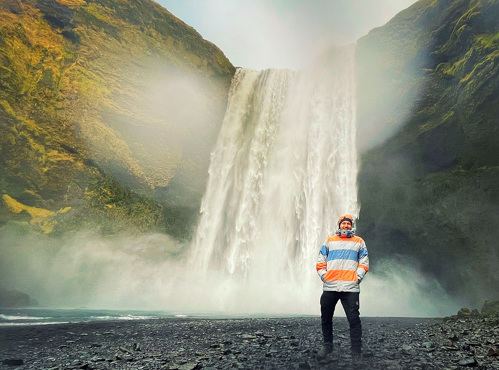
The Northern Lights
The best time to see the Northern Lights (aurora borealis) in Iceland is between October and February, however visibility during these months is never guaranteed, as the lights demand a very dark sky with no cloud cover. Unfortunately, we weren’t lucky enough to see them on this trip, despite jumping up and checking the sky frequently! We’ll have to save that experience for another time. Fortunately for our team, they were lucky enough to capture it on a previous trip.
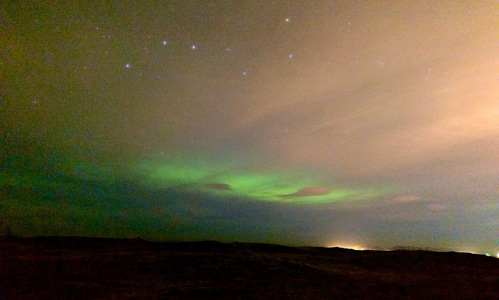
Currency and spending
The national currency in Iceland is the Icelandic króna, however debit and credit cards are widely accepted. During our trip the school group travelled full board and the hotel provided packed lunches to the students for any full day excursions. A lot of the excursions visited benefited from a gift shop and/or café, where students could buy souvenirs, snacks and hot drinks. As is the case with many Nordic countries, however, these can be quite pricey compared to what we’re used to paying in the UK!
Phone Coverage
We had no issues with phone coverage even when travelling through remote areas; the school group also had a pack of playing cards to keep them entertained on coach journeys.
Airport
Iceland’s main airport, Keflavík International Airport (KEF), is a 45-minute drive from the capital of Reykjavík. At the airport, most European flights leave Iceland around 7am, so the airport can be quite busy. Some gates are as long as a 20-minute walk from security and border control, so we’d advise allowing plenty of time to make your way through the airport before your flight.
Fun Fact
Iceland is one of the few countries in the world that doesn’t have a McDonald's! The burger chain failed to grasp the Icelandic market (which has its fair share of well-loved independent eateries) and left the country in 2009. You can still find the last McDonald’s ever served in Iceland on display in a small hostel, Snotra House, in the south of the island.
We did see a few outlets from KFC, Taco Bell, Subway and Domino’s Pizza, though.

To find out more about our school trips to Iceland, or to enquire about booking a Geography trip, please get in touch, and our experts will get back to you as soon as we can.






